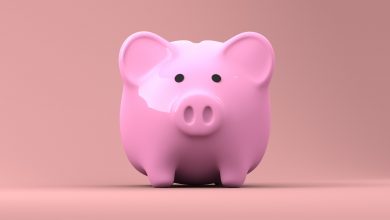The Fed’s Rate Cuts and Your Interest Payments

On July 31st, the Federal Reserve lowered interest rates for the first time in over ten years. In fact, the United States’ central bank has been increasing borrowing costs for a while. On December 1st, 2015, rates were only 0.25%. This allowed consumers to take advantage of low interest credit card, mortgage, and auto loan payments. Three years later, by the end of 2018, that number reached 2.5%.
When the Federal Open Market Committee (FOMC) makes these decisions, they apply to all banks and financial institutions. Needless to say, higher rates mean that people and businesses will borrow less money. This is because auto loans, mortgages, and credit cards become more expensive. However, since the Fed cut interest rates twice, once in July and another time in September, we can expect to see more economic activity.

What this means for you is low interest credit card and loan payments. In other words, conditions are in your favor if you are considering refinancing that mortgage or taking out another credit card. In addition, more people can afford to finance a home or car.
Fixed and Variable Rates
Between now and the end of 2019, the FOMC is going to meet twice: once in October and another time in December. A rate increase is incredibly unlikely. The Fed will either hold interest at its current two percent level, or they will further lower it.
What does this mean for your loans and credit cards? That largely depends on the payment arrangement that you have with the lender. In most cases, you either have a fixed interest rate (which doesn’t change) or a variable one that is tied to the FOMC’s decisions. Either way, however, the recent cuts can benefit you.
If you have a fixed rate, now is the time to refinance that loan, especially if you took it out during the last year. This is because you can get it at the current two percent level that the Fed established. You might, however, want to wait another two or three months. The FOMC could lower interest rates again later this month and/or in December. Even if they decide to keep them at their current levels, waiting a little longer isn’t going to hurt you.
Similarly, those who don’t have a loan or credit card might find this to be a great opportunity to get one. Meanwhile, consumers with a floating interest rate already benefited from the recent cuts. It might be worthwhile to consider switching to a fixed rate, however, especially if the FOMC decides to lower interest again. In this case, you want to study the likelihood of more cuts in 2020 before locking in a fixed rate.
The Larger Economic Picture: Low Interest Credit Card and Loan Payments
Whether you have an outstanding loan or credit card and regardless of its type (fixed vs. floating), the Fed’s recent decisions will grow the economy around you. When it costs less to borrow money (i.e. lower rates), businesses and other consumers alike will take out a low interest credit card or loan. In turn, companies are going to hire more people because their expenses will be lower while their revenues increase (since more customers have money to spend via their credit cards and loans).
Your employer, more likely than not, will benefit from this. If we are going to be very optimistic, you might be looking at an upcoming raise or more hours (especially for part-time workers). However, whether or not this happens, you still gain from more economic growth.
The Potential Downsides
Between 2015 and 2018, the FOMC increased interest rates for a reason. Mainly, they were worried about inflation, which is driven by more consumer spending and lower unemployment. When people have more money on their credit card or from their new job, businesses raise their prices because they know that more people can afford to pay for products and services.
This is especially concerning when you and other consumers don’t get a raise. The price you pay for food and other expenses will go up (aka inflation), but your salary remains the same. However, there are many reasons why this is not as big of a concern as many analysts expect it to be.
First of all, economic growth offsets inflation. Large multinational corporations, such as Target and Apple, pay millions in interest payments every year. Even a small rate cut creates enough savings for them to hire 100s of workers. In turn, many people, who would otherwise be unemployed, have a paycheck that they can re-spend into the economy. In these instances, inflation makes little to no difference.
Second, having low interest credit card, mortgage, or car payments puts more money in your pocket. Your living expenses will rise, but so will your savings and net household income. This makes it easier for you to pay off your debts quicker and qualify for more credit.
Looking Ahead

Even small, half-point rate cuts accumulate over the years and make consumers’ finances much healthier in the long term. For example, during the first three months of 2019, the average homeowner in the U.S. had over $200,000 in mortgage debt. The 0.5% cut between July and September allowed them to save about $1,000 per year (0.5% of $200,000). In many cases, this is enough to pay off an entire credit card.
The overall impacts of the recent rate cut will also grow the economy by lowering unemployment and decreasing debts for both consumers and corporations. If you are thinking about taking out a loan or refinancing an existing one, now is the right time to do so.
Review your current credit card, mortgage, or auto lease to see if you have a fixed or variable interest rate. A short trip to the bank can save you thousands of dollars. Your spouse will be more than happy if it’s time to go on that vacation that you previously couldn’t afford. So will your children, whose college savings account can now grow even faster.



